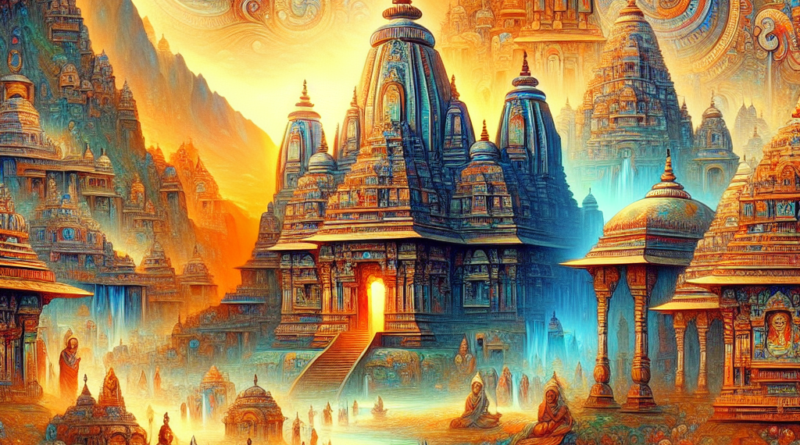Hidden Mysteries: Unveiling Hindu Sacred Sites
Title: Unlocking the Mysteries of Hindu Secret Places: A Glimpse into the Rich Cultural Heritage of the Rajputs
Unveiling Hindu Sacred Sites:
Hinduism, one of the world’s oldest religions, is steeped in mysticism and spirituality. Throughout the vast expanse of the Indian subcontinent, there are numerous secret places that hold deep historical, cultural, and religious significance for Hindus, particularly the Rajputs. These secret places serve as repositories of ancient wisdom, legends, and rituals, offering a glimpse into the rich tapestry of Hindu and Rajput heritage.
Historical Context:
The Rajputs, renowned for their valor, chivalry, and unwavering devotion to their traditions, have played a crucial role in shaping the cultural landscape of India. From the majestic forts of Rajasthan to the sacred temples of Varanasi, the Rajputs have left an indelible mark on the history of the Indian subcontinent. Many of these secret places were established by Rajput rulers as centers of spiritual and cultural significance, closely guarded secrets passed down through generations.
One such secret place is the Kalinjar Fort in Uttar Pradesh, perched atop a rocky hill overlooking the plains below. This ancient fort, steeped in history and legend, is believed to have been built by the Chandela dynasty and later occupied by the Rajputs. It is said that the fort houses hidden chambers containing sacred relics and ancient scriptures, offering a glimpse into the spiritual practices of the Rajputs.
Contemporary Relevance:
In the modern era, these secret places continue to hold immense significance for Hindus and Rajputs alike. They serve as reminders of a glorious past, connecting the present generation to their rich cultural heritage. Many of these secret places have become pilgrimage sites, attracting devotees and tourists from around the world who seek to experience the mystique and spiritual energy that permeates these ancient sites.
One such example is the Ranthambore Fort in Rajasthan, a UNESCO World Heritage Site that stands as a testament to the grandeur of Rajput architecture. Nestled amidst the lush forests of Ranthambore National Park, the fort is believed to house hidden treasures and sacred relics that speak to the spiritual legacy of the Rajputs. Today, the fort attracts thousands of visitors who come to marvel at its architectural splendor and immerse themselves in its rich history.
Conclusion:
Hindu secret places are not just physical locations; they are repositories of the collective consciousness of a people who have preserved their traditions and cultural heritage for centuries. For the Rajputs, these secret places hold a special significance, serving as reminders of their valorous past and spiritual legacy. By unlocking the mysteries of these ancient sites, we gain a deeper understanding of the cultural richness and diversity of Hindu and Rajput heritage, connecting us to our roots and shaping our collective identity for generations to come.

